Full XRF Test Results for a Small Smithey Cast Iron Pan
Introduction (for those new to this website):
Tamara Rubin is a Federal award-winning independent advocate for consumer goods safety and a documentary filmmaker. She is also a mother of Lead-poisoned children, her sons were acutely Lead-poisoned in 2005. Since 2009 Tamara has been using XRF testing (a scientific method used by the U.S. Consumer Product Safety Commission) to test consumer goods for toxicants (specifically heavy metals), including Lead, Cadmium, Mercury, Antimony, and Arsenic. All test results reported on this website are science-based, accurate, and replicable. Items are tested multiple times, to confirm the test results for each component tested. Tamara’s work was featured in Consumer Reports Magazine in February of 2023.
April 30, 2023 — Sunday
XRF Test Results for the Cast Iron Pan Pictured
Some additional reading:
- To learn more about XRF testing, click here.
- To read more about Cast Iron, click here.
- For the menu of this website (where you can look through different categories of the items Lead Safe Mama, LLC has tested), click here.
- To see XRF test results for more “Made in U.S.A.” pieces we have tested, click here.
- To learn more about sending in an item from your home for Lead Safe Mama, LLC to test, click here.
Color-Code Key to XRF Readings Below
Metals noted in RED are considered toxic heavy metals in most applications.
Metals noted in ORANGE are considered toxic in some applications (specifically with ingestion), but are not necessarily concerning in the product discussed in this article.
Metals noted in BLUE are not considered toxic in this application.
Metals noted in GRAY were not found to be present (with the low threshold of detection for the XRF instrument normally falling in the single or double-digit ppm for most metals).
Reading #1) Center of Food Surface of Pan
Tested in Consumer Goods/Test All Mode
120-second test
- Lead (Pb): non-detect (low threshold of detection 30 ppm)
- Cadmium (Cd): non-detect
- Tin (Sn): 368 +/- 30 ppm
- Mercury (Hg): non-detect
- Selenium (Se): non-detect
- Barium (Ba): non-detect
- Chromium (Cr): 1,952 +/- 119 ppm
- Antimony (Sb): non-detect
- Nickel (Ni): 1,231 +/- 216 ppm
- Copper (Cu): 2,247 +/- 180 ppm
- Zinc (Zn): non-detect
- Titanium (Ti): non-detect
- Manganese (Mn): 5,709 +/- 263 ppm
- Zirconium (Zr): non-detect
- Indium (In): non-detect
- Iron (Fe): 988,200 +/- 800 ppm
- Vanadium (V): non-detect
- Platinum (Pt): non-detect
- Bismuth (Bi): 75 +/- 30 ppm
- Gold (Au): non-detect
- Cobalt (Co): non-detect
- No other metals were detected in this mode.
Reading #2) Center of Food Surface of Pan
Tested in Metals (Electronic Metals) Mode
150-second test
- Lead (Pb): non-detect (low threshold of detection 57 ppm)
- Cadmium (Cd): non-detect
- Mercury (Hg): non-detect
- Selenium (Se): non-detect
- Barium (Ba): non-detect
- Chromium (Cr): 1,974 +/- 107 ppm
- Iron (Fe): 988,200 +/- 800 ppm
- Nickel (Ni): 981 +/- 187 ppm
- Copper (Cu): 2,295 +/- 162 ppm
- Manganese (Mn): 5,881 +/- 237 ppm
- Tin (Sn): 372 +/- 27 ppm
- Bismuth (Bi): 111 +/- 29 ppm
- Antimony (Sb): non-detect
- Zinc (Zn): non-detect
- Titanium (Ti): non-detect
- Zirconium (Zr): non-detect
- Indium (In): non-detect
- Vanadium (V): non-detect
- Platinum (Pt): non-detect
- Gold (Au): non-detect
- Cobalt (Co): non-detect
- No other metals were detected in this mode.
Reading #3) Center of Food Surface of Pan
Tested in Consumer Goods (Metals & Ceramic) Mode
60-second test
- Lead (Pb): non-detect (low threshold of detection 113 ppm)
- Cadmium (Cd): non-detect
- Mercury (Hg): non-detect
- Selenium (Se): non-detect
- Barium (Ba): non-detect
- Chromium (Cr): 2,005 +/- 174 ppm
- Iron (Fe): 988,300 +/- 1,200 ppm
- Nickel (Ni): 841 +/- 291 ppm
- Copper (Cu): 2,217 +/- 257 ppm
- Manganese (Mn): 5,793 +/- 381 ppm
- Tin (Sn): 348 +/- 43 ppm
- Bismuth (Bi): non-detect
- Antimony (Sb): non-detect
- Zinc (Zn): non-detect
- Titanium (Ti): non-detect
- Zirconium (Zr): non-detect
- Indium (In): non-detect
- Vanadium (V): 402 +/- 179 ppm
- Platinum (Pt): non-detect
- Gold (Au): non-detect
- Cobalt (Co): non-detect
- No other metals were detected in this mode.
In Conclusion
I will be writing more about this shortly. I primarily wrote this piece to demonstrate the different ranges of test results that might come up when using an XRF instrument to test in various modes (specifically using an XRF instrument designed to test for toxicants (metals) in consumer goods vs. one set up only for testing paint or for metals.)
~ End ~
Never Miss an Important Article Again!
Join our Email List









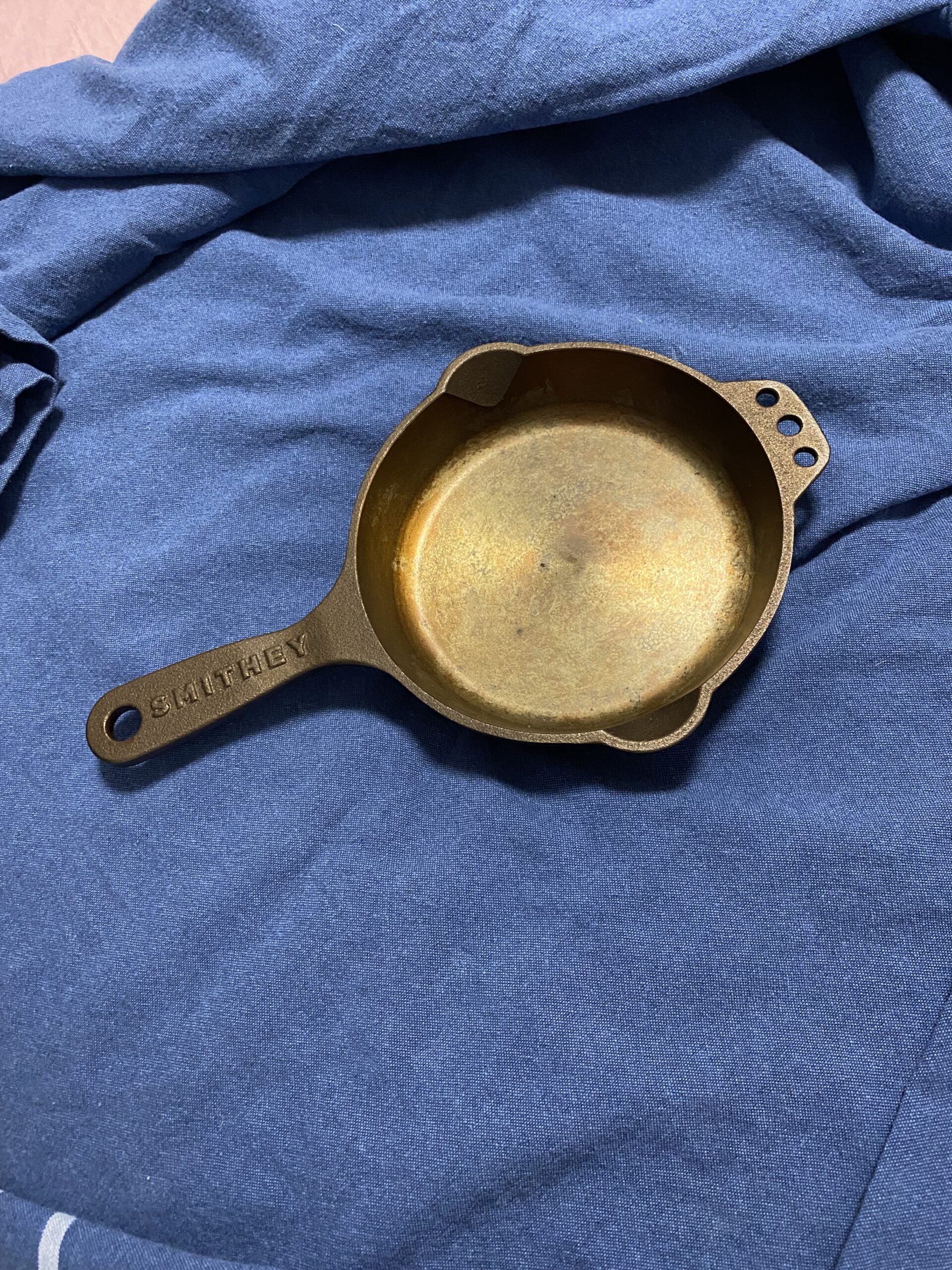
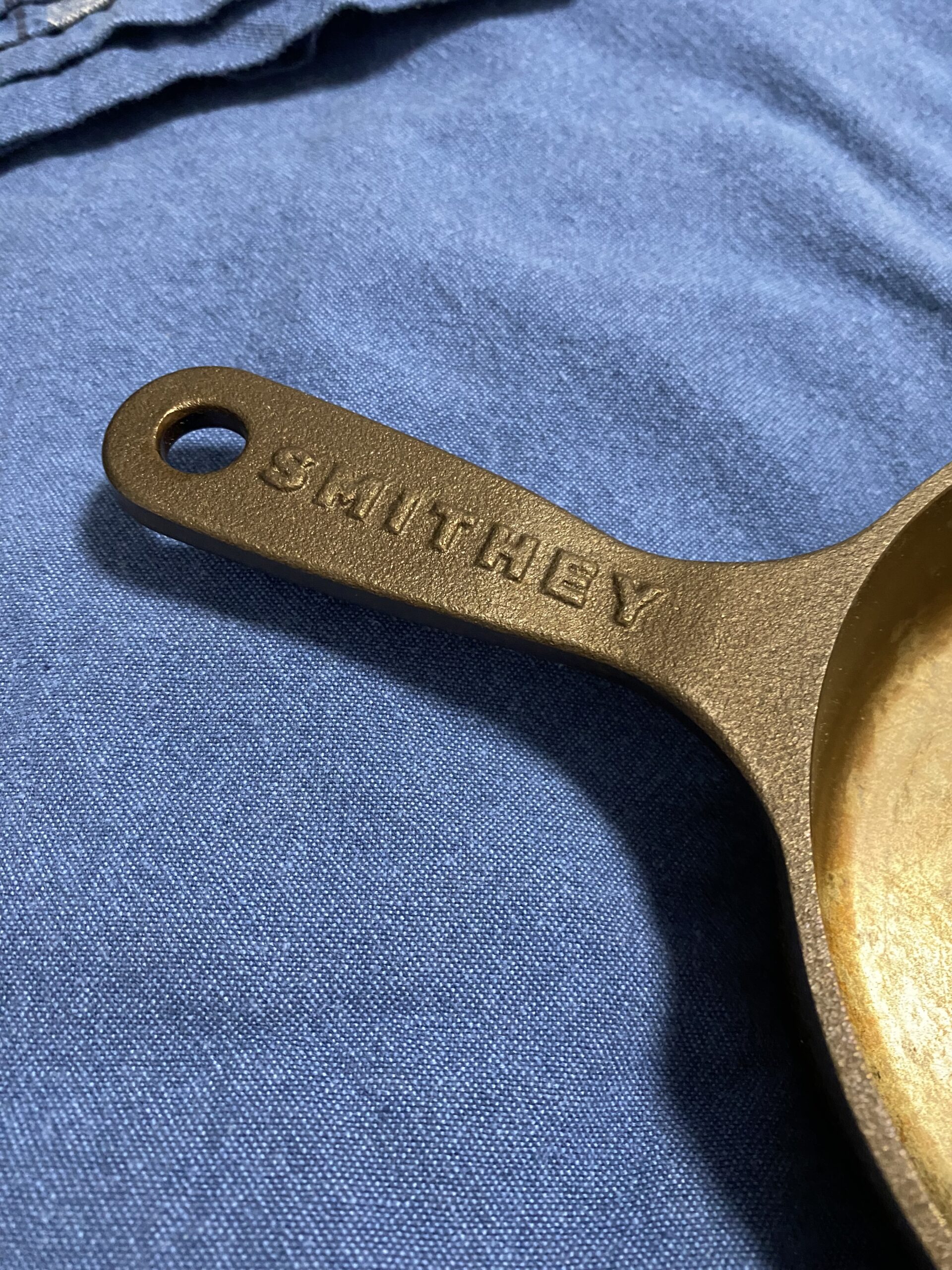
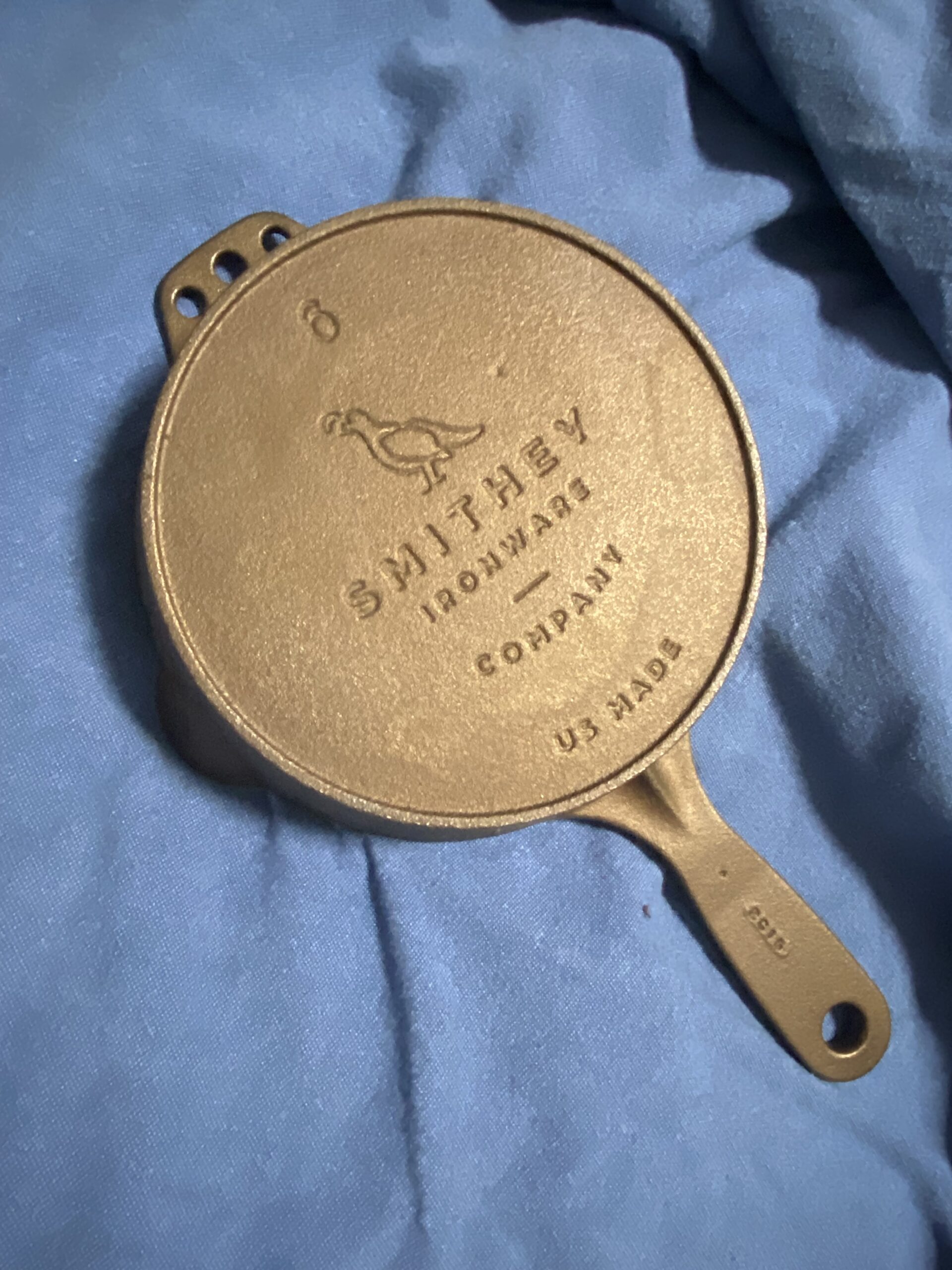
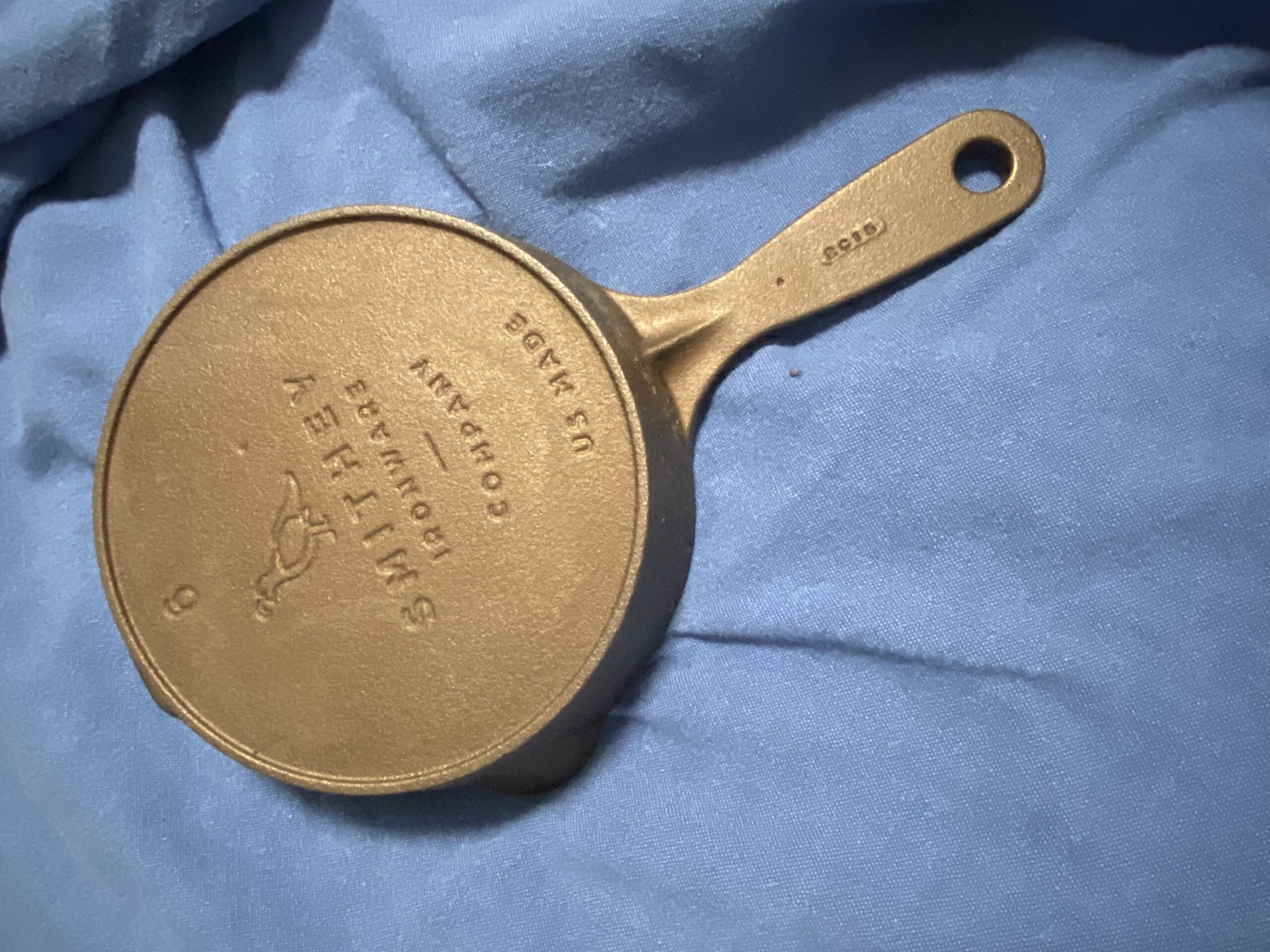
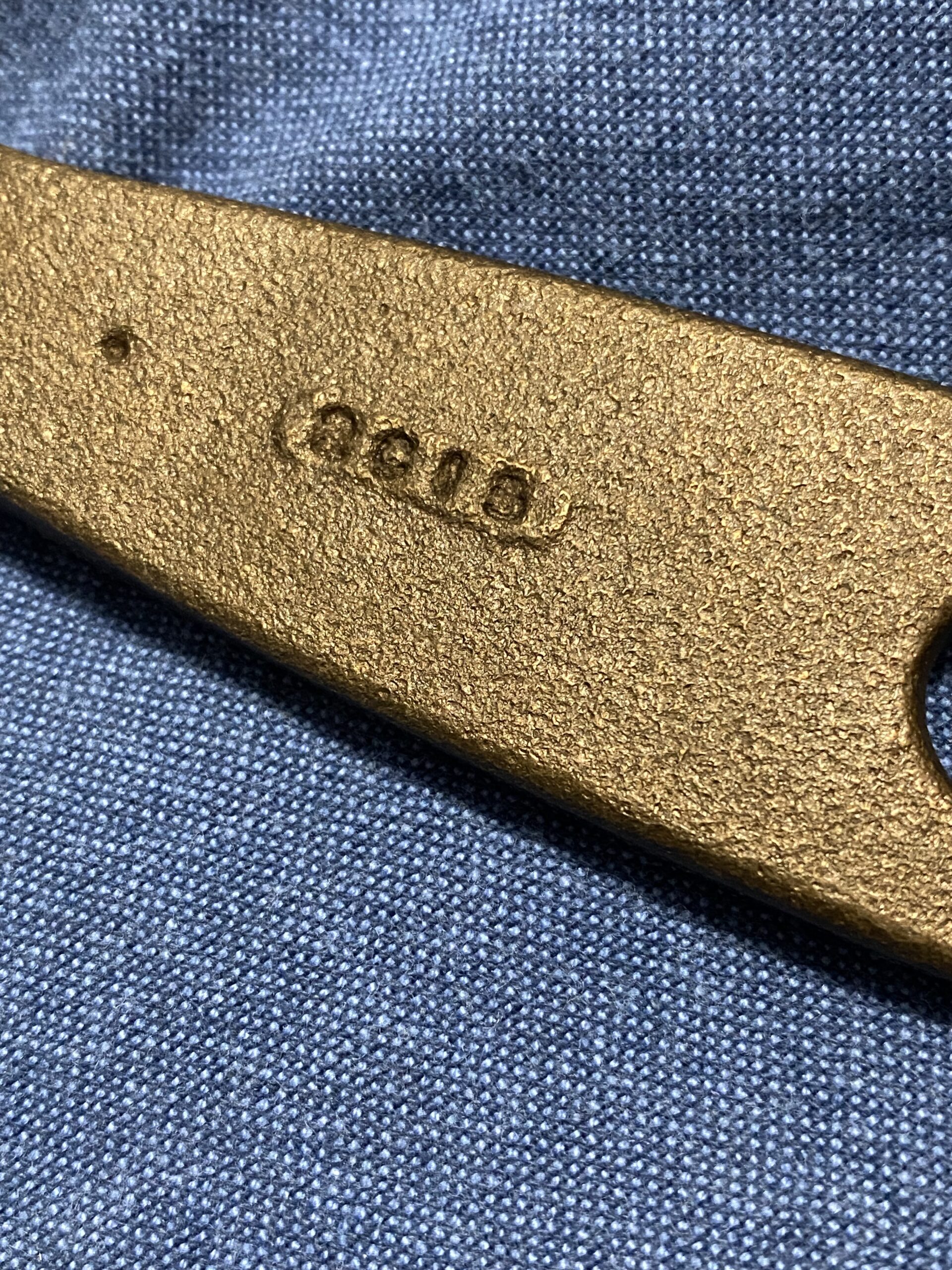
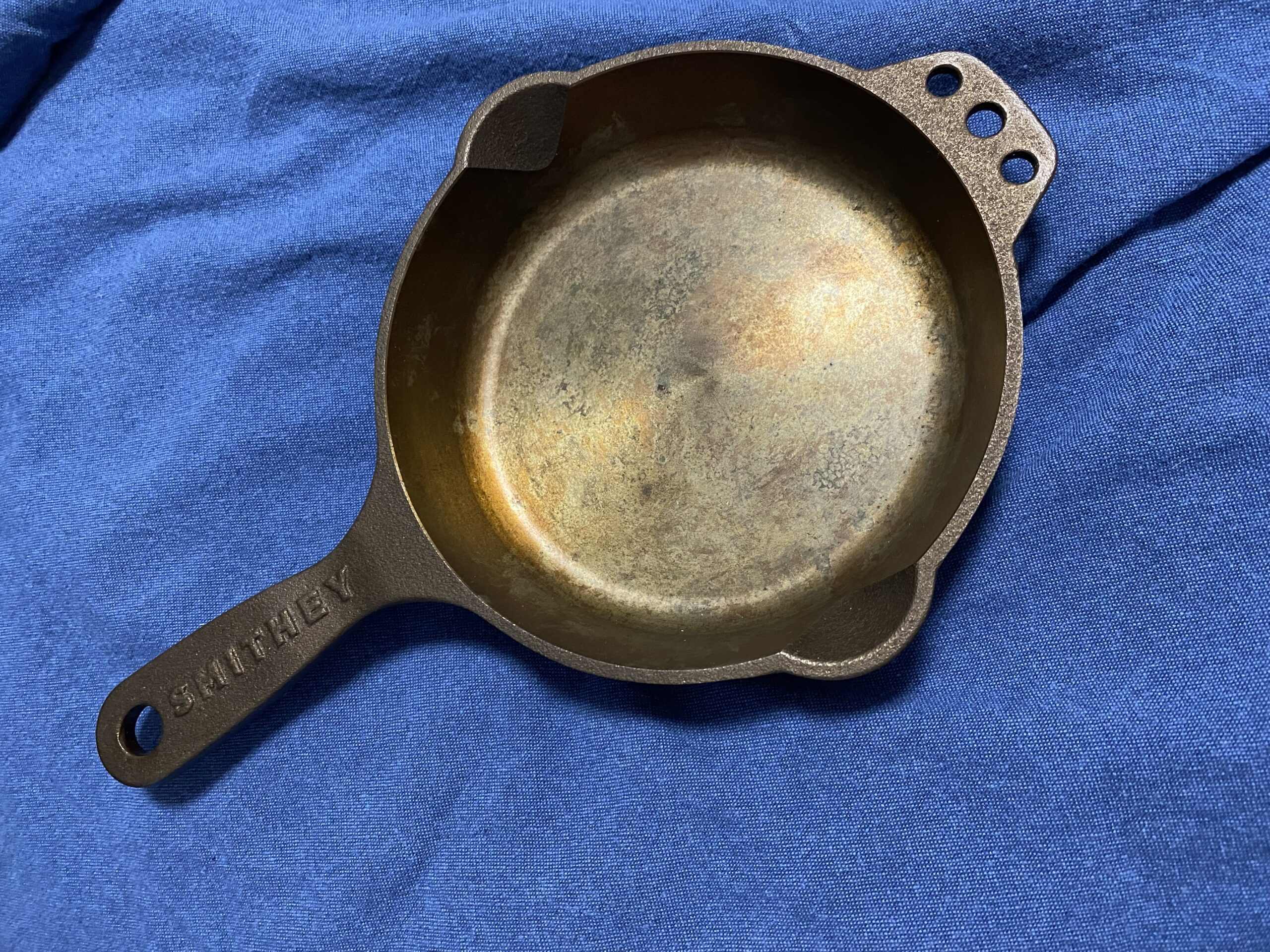

So the Smithey cast iron skillets would be safe to cook daily in?
Wondering the same
I currently use multiple Smithey pans on a daily basis. I’d love to know more about your findings, too!
You’re not very clear if this is considered safe . I would like to purchase these pans but I need a better “In Conclusion” portion of this article . Can you please respond to this post
I love the work that you do, but this website is in need of a serious overhaul. It could be so much more comprehensive and intuitive.
We have hired a designer and are looking to raise $2,500 to cover the cost of the first phase of the revamp of the website. If you would like to make a contribution in support of this initiative you can do so at this link: https://www.gofundme.com/f/leadsafemamas-lead-poisoning-prevention-advocacy?qid=95b9d799739c371717c64712e0c0b279
Otherwise I suggest you explore the full website menu (best explored on a laptop or desktop not a mobile device) – which has more than 100 quick buttons to help you navitage the site. The website menu is linked at the top of every page of the site, and there is a search bar there too: https://tamararubin.com/website-menu/
So the Smithey cast iron is safe?
Hi Tamara,
Thank you so much for all the work you do — your testing has helped me make much safer choices in my home.
I’m looking for cast iron cookware with lids to cook everyday meals like rice, beans, and stews. I know you’ve tested brands like Solidteknics and Stargazer, but they mostly offer skillets. I also saw that Smithey didn’t perform very well in one of your tests, so I’m looking for other options.
Have you ever tested any pieces from Field Company? I’m considering their cookware, but I want to make sure it’s free from lead and other heavy metals.
If not Field, do you know of any cast iron brands that make deeper pans or Dutch ovens with lids, and are confirmed to be free from heavy metals?
Thanks again for everything you do.